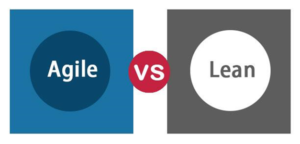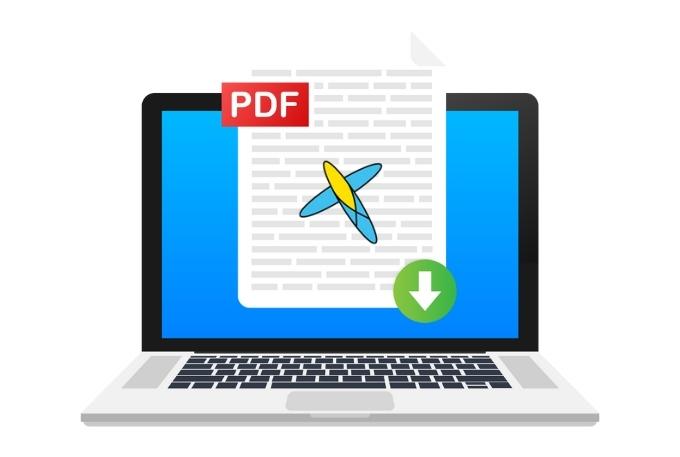Many stakeholders, leadership teams and management teams face this question when embarking on an agile transformation. By transformation, we mean a complete cultural change, a new operating model, an overhaul of previous ways of working, across the entire organization. Whilst Agile methodology was initially created to improve the efficiency of software development, it has now become a popular and effective operating model for an entire business.
The difference between traditional businesses and Agile organisations is quite apparent. The first, noticeable difference is the ’agile manifesto’, which promotes continuous improvement, inspection, and adaptation. Compared to traditional organisations, Agile organizations can inspect, adapt and change. In short, they can embrace change management, fulfil changing customer demands (and ultimately gain customer satisfaction), understand real-world conditions and take full advantage of unpredictable markets.
Successful Agile transformation requires the buy-in of the entire organization. Agile values, agile principles and agile processes need to be accepted, adhered to and embraced by everyone from the top down, from leadership teams and management teams to development teams, project management teams and all team members in between. Instead of working in silos and hierarchies, agile teams work collaboratively and flexibly.
What are the key components of an agile transformation?
- Prioritise people over processes
- Fully functioning software over comprehensive documentation
- Collaboration over contract negotiation
- Ability to change over sticking to a plan.
What should management do before they start an agile transformation?
To successfully implement an agile transformation across an entire organization, rather than agile adoption in a single department, requires major changes.
Structural change – traditional hierarchies are out, replaced by self-organizing teams with the autonomy to respond to information. Agile leadership needs to be visible from the top down.
Process change – instead of the traditional project management approach of the waterfall method (working in one direction towards a set goal), Agile processes break projects into bitesize chunks (sprints). Agile practices include continuous improvements and regular, iterative releases rather than one final launch at the end of the project.
Cultural change – successful change management involves getting employee engagement in the process. The entire organization need to understand the benefits of agile, in order to change their working practices, behaviours and approaches. This aspect can be the most challenging part of Agile transformation and organizational change.
What type of management skills are needed to manage an agile transformation?
Leaders and managers need to shift from the traditional to a creative, agile mindset in order to adjust to the new way of working. This is not an easy thing to do. It requires a new focus, inner agility and reactive flexibility.
Creative thinking and exploration replace certainty and linear decision-making. Leaders need to encourage experimentation and risk-taking in product development and project management.
Collaboration is key. Leaders are no longer at the top of hierarchies with teams working in silos. Again, this can take a while to accept. Agile leadership teams need to trust team members to be self-organizing and to work autonomously.
Leaders and managers need to have effective communication skills to convey agile principles and cultural changes to their teams. This factor is important for all roles, especially the leadership team at the start of the transformation when an Agile mindset is at an early stage of the business roadmap. Subsequently, it’s vital for Scrum masters on a daily basis of implementation.
How to have a successful agile transformation through scaled agile?
Scaled Agile Framework says that conventional agile teams work best in teams of 5-11 members. Leaders need to build these small, diverse, nimble and collaborative teams in the first instance.
Lean scaled agile refers to translating the agile methods and implementing lean thinking such as Kanban and Scrum within the organisation on a broader level. Lean scaled agile requires several factors to contribute to the complete process including:
- Role specialisation
- Team size
- Role of product owner
- Iteration length
- Role of user
- Size of the batch
- Definition of release
- Definition of done/ Definition of reading.
Lean agile transformation for leaders, managers, and suppliers should be considered a large-scale transformation because of the involvement of cross-functional teams and the entire organization.
Any large-scale agile transformation should include:
- The transformation scope should have a specific set of roles, including leadership, teams, management, suppliers and support teams.
- A safe implementation roadmap including a timeline for a set of goals.
- Lean and Agile basic building blocks and lean-agile methodologies combined with Kanban and Scrum boards.
- Solid and robust metrics reflect the whole transformation process, value delivery, continuous improvement, and maturity.
Lean scaled agile benefits
Improves management capacity
Capacity management is one of the agile ways and is usually known for balancing availability and workload. With the scaled agile approach, capacity management aligns with the ARTs, teams and has retrospective assessments every quarter. This helps create value while allowing for flexibility and change, empowering enterprise leaders to balance out and reflect regularly with minimum disruption and lead time.
Engages employees
Scaling agile offers in-built freedom and creates trust in the team and at individual levels. When it comes to decision-making, every individual decides how they will deliver the work and how their contributions impact the business’ overall goals.
Aligns work and strategy
With precise alignment between the top-level enterprise objectives and the employees, those involved will promote:
- Encouraging transparency
- Fostering quick response times
- Enhancing agility
- Cross-team coordination
Enables visibility in organisation-wide transparency
Agile leaders and agile coaches help scale lean-agile, visualise and connect work for every team while enabling enterprise-wide transparency. Through this visibility, everyone can see, clearly and consistently, how everyone works in the organisation.
In conclusion
Successfully transacting from the traditional management system to agile management is complex. This modern problem requires a modern solution such as lean scaled agile scaling. In short, the readiness of management remains the key factor in the successful agile transformation.
by Ming Wei | May 26 2023 | Leadership And Management, Leadership Tribe




